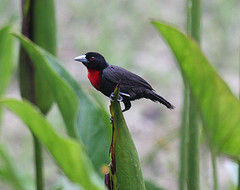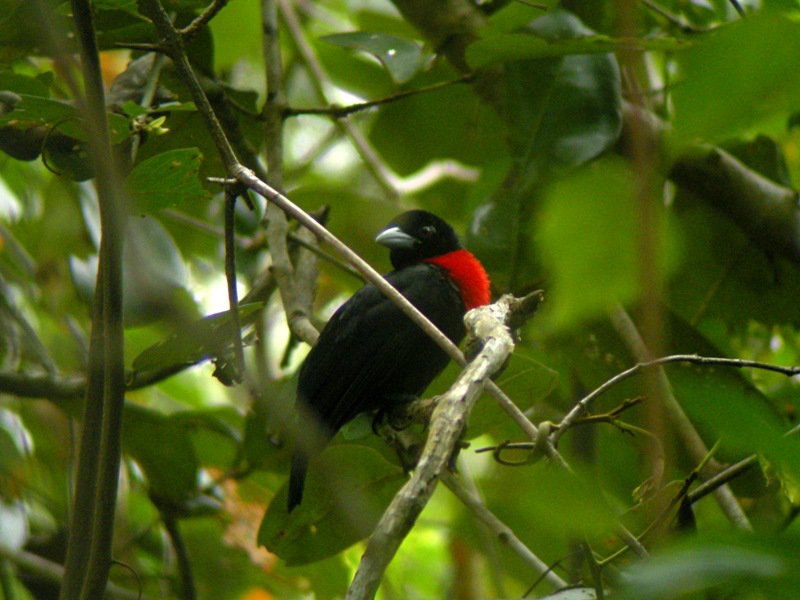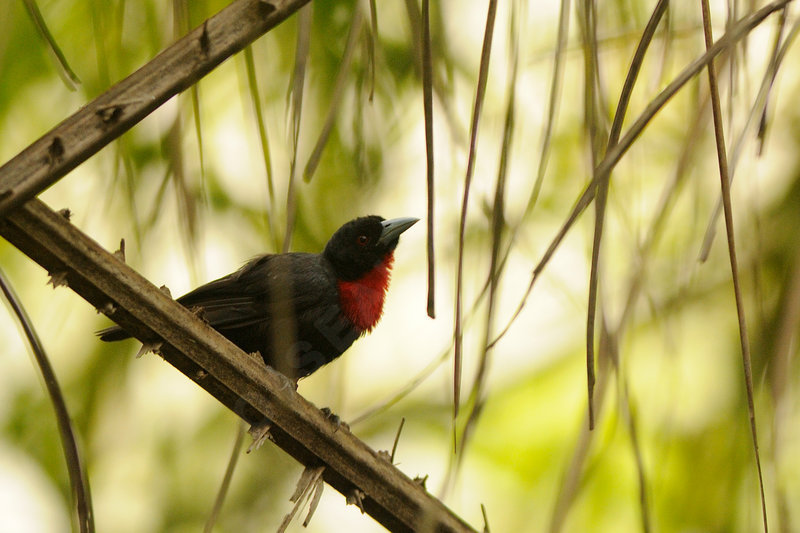
Malimbus nitens
SUBFAMILY
Ploceinae
TAXONOMY
Ploceus nitens J. E. Gray, 1831, Sierra Leone.
OTHER COMMON NAMES
English: Gray’s malimbe; French: Malimbe а bec bleu; German:
Rotkehlweber; Spanish: Malimbe de Gray.
PHYSICAL CHARACTERISTICS
5.7–6.7 in (14.5–17.0 cm); female 1.0–1.2 oz (29–36 g), male
1.3–1.7 oz (38–47 g). Black with scarlet throat; female less
glossy than male, black tinged with brown, and red less intense.
Bill blue-gray, eye red. Juvenile sooty brown with throat
and breast dull orange-brown. Eye gray-brown.
DISTRIBUTION
Senegal east to extreme western Uganda, south to Democratic
Republic of Congo and northern Angola.
HABITAT
Lowland forest, oil palms, swamp forest, and mangroves; occasionally
dense savanna woodland.
BEHAVIOR
Usually solitary or in pairs, occasionally groups up to seven
birds; regularly joins mixed-species flocks. Very shy except at
the nest.
FEEDING ECOLOGY AND DIET
Mainly insects, also spiders and some fruit. Forages on thin
twigs, clusters of dry leaves, and vine tangles, mainly at midlevels
of forest.
REPRODUCTIVE BIOLOGY
Solitary and monogamous, although sometimes several pairs
nest close together. Male courtship, singing and posturing, occurs
away from the nest. Nest is ball-shaped, woven from palm
strips, rootlets, or fibers, with canopy over entrance placed low
at one side; always overhanging water. In Ghana the birds appear
to select nest sites close to crocodile dens. Lays one to
two eggs during late summer to autumn. Incubation 14 days,
fledging 16 days. Female alone incubates, and broods small
chicks; both male and female feed young.
CONSERVATION STATUS
Not threatened, but will not survive without undisturbed forest
HABITAT
.
SIGNIFICANCE TO HUMANS
None known.
Other popular Animals
Photo Gallery of - Blue-billed malimbe




 Animalia Life
Animalia Life